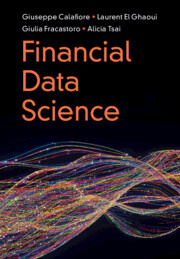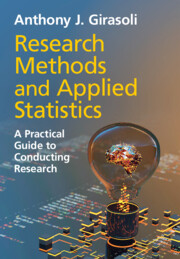Refine search
Actions for selected content:
37953 results in Cambridge Textbooks
Tables
-
- Book:
- Corporate Power and the Politics of Change
- Published online:
- 17 December 2025
- Print publication:
- 18 December 2025, pp xvii-xviii
-
- Chapter
- Export citation
Copyright page
-
- Book:
- Corporate Power and the Politics of Change
- Published online:
- 17 December 2025
- Print publication:
- 18 December 2025, pp iv-iv
-
- Chapter
- Export citation
1 - Corporations as Agents of Socioeconomic Change
- from Part I - The Landscape
-
- Book:
- Corporate Power and the Politics of Change
- Published online:
- 17 December 2025
- Print publication:
- 18 December 2025, pp 25-67
-
- Chapter
- Export citation
Index
-
- Book:
- Corporate Power and the Politics of Change
- Published online:
- 17 December 2025
- Print publication:
- 18 December 2025, pp 213-217
-
- Chapter
- Export citation
Part II - The Law and the Merits
-
- Book:
- Corporate Power and the Politics of Change
- Published online:
- 17 December 2025
- Print publication:
- 18 December 2025, pp 93-176
-
- Chapter
- Export citation
Figures
-
- Book:
- Corporate Power and the Politics of Change
- Published online:
- 17 December 2025
- Print publication:
- 18 December 2025, pp xv-xvi
-
- Chapter
- Export citation
3 - Corporate Governing and the Law
- from Part II - The Law and the Merits
-
- Book:
- Corporate Power and the Politics of Change
- Published online:
- 17 December 2025
- Print publication:
- 18 December 2025, pp 95-113
-
- Chapter
- Export citation
4 - Normative Foundations for Assessing Corporate Governing
- from Part II - The Law and the Merits
-
- Book:
- Corporate Power and the Politics of Change
- Published online:
- 17 December 2025
- Print publication:
- 18 December 2025, pp 114-146
-
- Chapter
- Export citation
Part III - The Way Forward
-
- Book:
- Corporate Power and the Politics of Change
- Published online:
- 17 December 2025
- Print publication:
- 18 December 2025, pp 177-212
-
- Chapter
- Export citation
Contents
-
- Book:
- Corporate Power and the Politics of Change
- Published online:
- 17 December 2025
- Print publication:
- 18 December 2025, pp ix-xiv
-
- Chapter
- Export citation
Dedication
-
- Book:
- Corporate Power and the Politics of Change
- Published online:
- 17 December 2025
- Print publication:
- 18 December 2025, pp v-v
-
- Chapter
- Export citation
Acknowledgments
-
- Book:
- Corporate Power and the Politics of Change
- Published online:
- 17 December 2025
- Print publication:
- 18 December 2025, pp xix-xxii
-
- Chapter
- Export citation

Corporate Power and the Politics of Change
-
- Published online:
- 17 December 2025
- Print publication:
- 18 December 2025
-
- Textbook
- Export citation

Financial Data Science
-
- Published online:
- 17 December 2025
- Print publication:
- 17 July 2025
-
- Textbook
- Export citation

Explanation and Critical Thinking in the Neurosciences
- Bridging the Gaps
-
- Published online:
- 17 December 2025
- Print publication:
- 22 January 2026
-
- Textbook
- Export citation

Research Methods and Applied Statistics
- A Practical Guide to Conducting Research
-
- Published online:
- 17 December 2025
- Print publication:
- 02 October 2025
-
- Textbook
- Export citation

Introductory Ring Theory
- Coming soon
-
- Expected online publication date:
- December 2025
- Print publication:
- 31 January 2026
-
- Textbook
- Export citation

Applied Linguistics Research
- A Comprehensive Guide to Methodology, Design, Analysis, and Evaluation
-
- Published online:
- 12 December 2025
- Print publication:
- 11 September 2025
-
- Textbook
- Export citation

Statistics for Chemical Engineers
- From Data to Models to Decisions
-
- Published online:
- 12 December 2025
- Print publication:
- 25 September 2025
-
- Textbook
- Export citation

Play in the Early Years
-
- Published online:
- 12 December 2025
- Print publication:
- 11 December 2025
-
- Textbook
- Export citation
